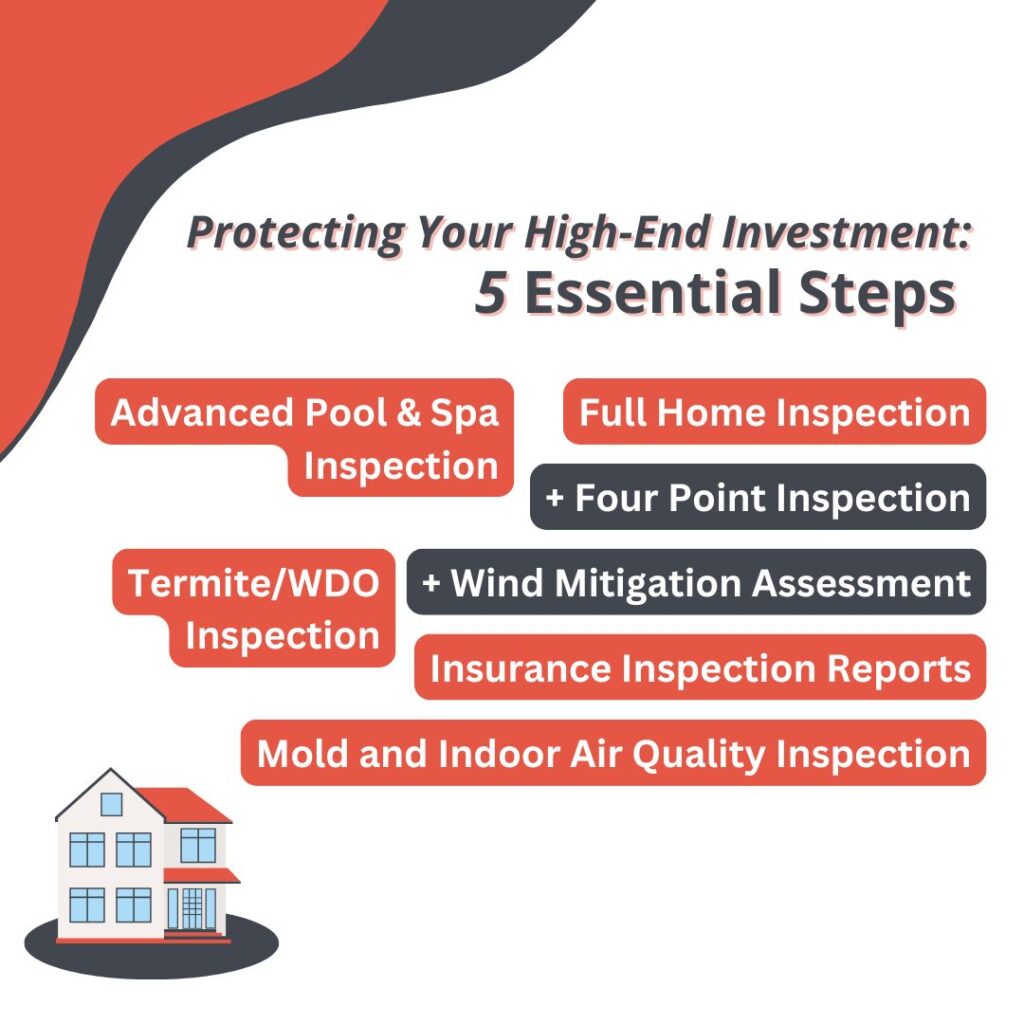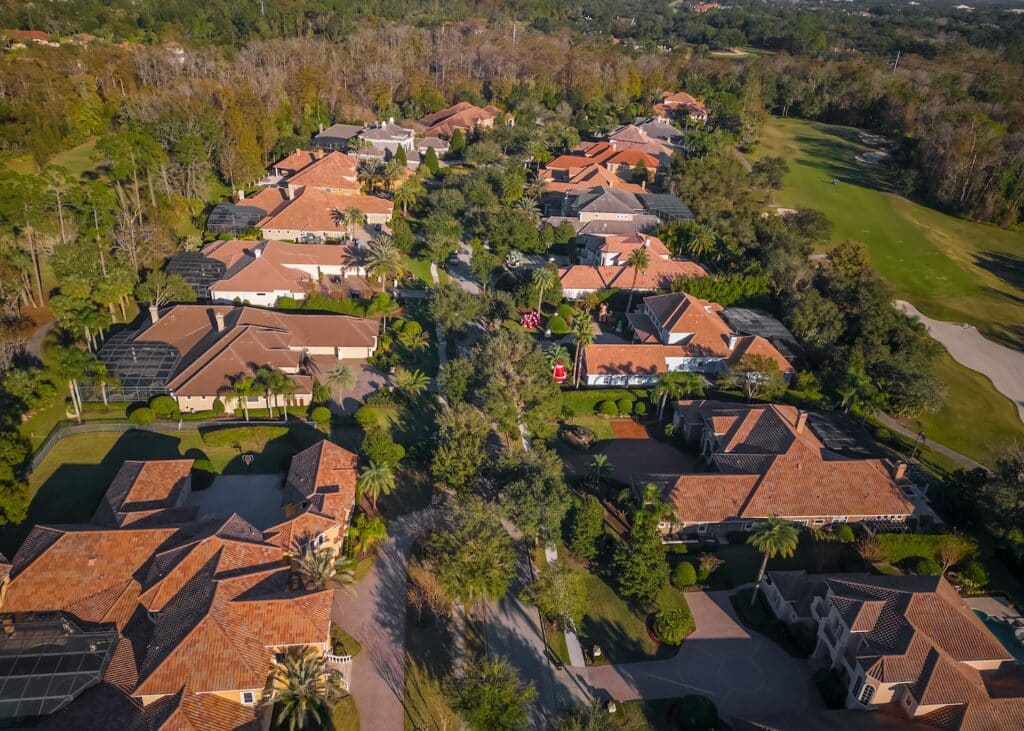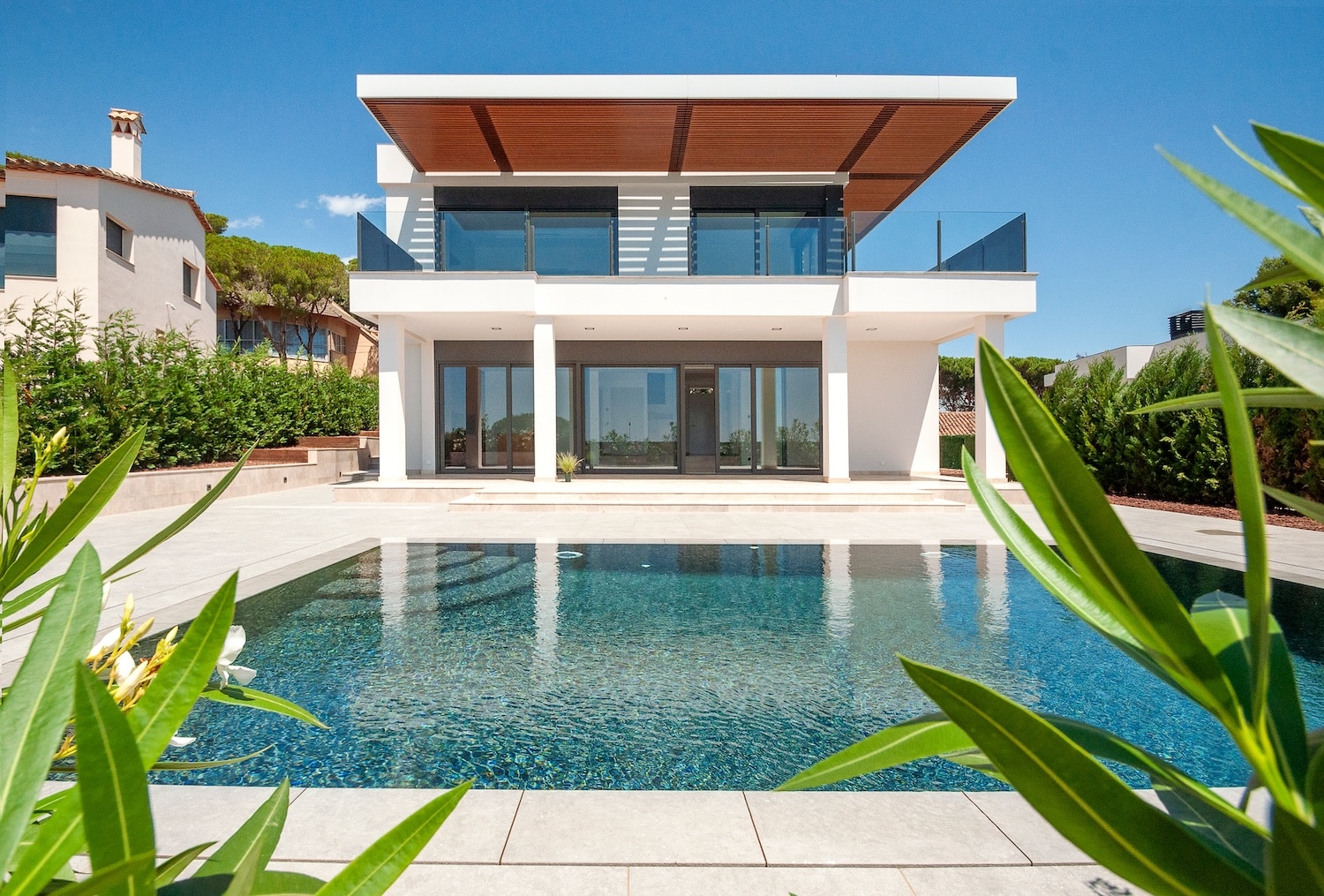Investments in a high-end property come with high expectations—and high stakes. Luxury homes often have complex systems, unique materials, and added amenities that need specialized care to maintain their value.
Regular inspections are essential for protecting these investments, helping owners identify and address potential issues early. But how do you know which inspection types to schedule, and when?
Table of Contents
ToggleFull Home Inspection with Essential Add-Ons
A full home inspection is the first step in evaluating the overall condition of any property, and it’s especially vital for high-end homes.
This comprehensive assessment covers all major systems and structures, ensuring everything from the foundation to the roof meets safety and quality standards.
For luxury homes, additional assessments like these are essential:
- Four-Point Inspection: Reviews HVAC, electrical, plumbing, and roofing systems, often required for insurance on older homes or homes in areas prone to specific risks.
- Wind Mitigation Inspection: Essential for areas like Florida, where hurricanes and storms pose serious threats. This inspection assesses the property’s wind resistance features, potentially lowering insurance premiums.

Insurance Inspection Reports
Luxury homes often require specific insurance inspections to qualify for comprehensive coverage and potentially lower premiums.
The Four-Point Inspection and Wind Mitigation Report are especially useful for properties in hurricane-prone areas like Florida.
This inspection confirms that key systems—HVAC, electrical, plumbing, and roofing—are up-to-date and in good condition.
Wind mitigation assessments look at resistance to wind damage. For high-end properties in coastal regions, this report can lead to insurance discounts by showcasing resilience that protects the home.
Advanced Pool and Spa Inspection
Pools and spas add value and enjoyment to a high-end properties, but they also come with unique investments in maintenance.
Advanced pool inspections go beyond the basics, thoroughly evaluating each component to prevent future issues.
Here’s what a comprehensive pool and spa inspection covers:
- Structural Integrity: Checks for cracks, leaks, and other structural issues that could worsen with time, particularly in aging pools or those exposed to frequent use.
- Filtration and Circulation Systems: Ensures that essential equipment like filters, pumps, and heaters are functioning properly to keep the water clean, clear, and at a consistent temperature.
- Safety Standards: Examines safety barriers, fencing, and any childproofing features, which are especially critical if young children or frequent guests use the property.
Termite/WDO Inspection
Luxury homes with unique wood finishes, outdoor decks, and custom wood structures are especially vulnerable to wood-destroying organisms (WDOs) like termites.
A thorough WDO inspection protects your investment from hidden threats that could compromise both appearance and structural integrity. Key areas typically examined include:
- Foundation and Framing: Inspects the foundational wood structures for any signs of termite presence or damage.
- Outdoor Wooden Features: Evaluates exterior wood structures, like decks, porches, and fences, which are highly susceptible to infestations.
- Interior Woodwork: Examines cabinetry, trim, and hardwood floors for early signs of infestation or damage.
Frequent WDO inspections help high-end property owners catch infestations early so custom wood details and structural woodwork remain strong.
Mold and Indoor Air Quality Inspection
With complex HVAC systems and higher-end materials, luxury properties can be more prone to issues with indoor air quality and mold.
Mold and air quality inspections are critical for preserving the health of residents and the home’s market value.
A comprehensive inspection focuses on:
- Moisture Sources: Identifies areas with excess humidity or leaks, both common culprits behind mold growth.
- HVAC System Health: Ensures HVAC systems are functioning efficiently and not spreading contaminants throughout the home.
- Air Quality Testing: Tests for mold spores and other pollutants, helping homeowners maintain a healthy indoor environment.

Other Maintenance for High-End Properties
Beyond essential inspections, ongoing maintenance is key to preserving the value and beauty of luxury homes.
Consistent upkeep can prevent small issues from turning into costly repairs and ensure all systems operate smoothly. Here are some maintenance tips that make a difference:
- Schedule seasonal HVAC maintenance to improve airflow, reduce energy costs, and keep humidity in check.
- Conduct regular roof and exterior inspections after storms or seasonal changes, catching any wear or damage early.
- Perform routine pool and spa checks to monitor water quality, inspect equipment, and address any structural concerns to keep these amenities in pristine condition.
When to Call a Professional
For luxury properties, enlisting an inspector is an investment in peace of mind. These experts understand the complexities of high-end homes and can provide insights into specialized systems, materials, and potential problem areas that might otherwise go unnoticed.
A professional inspection not only identifies current issues but also helps prioritize future maintenance to protect the home’s value and longevity.
If you’re uncertain about the condition of your property or notice any early warning signs, calling in an expert can make all the difference.
Conclusion
Protecting a high-end property and the investments that went into it requires a thoughtful approach, especially when it comes to inspections. Each of these five key inspections helps safeguard your investment, from uncovering hidden issues to maintaining the home’s quality and safety standards.

